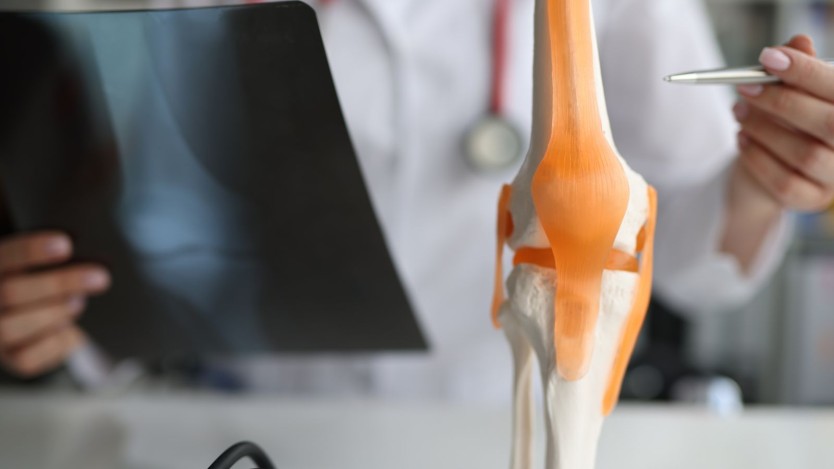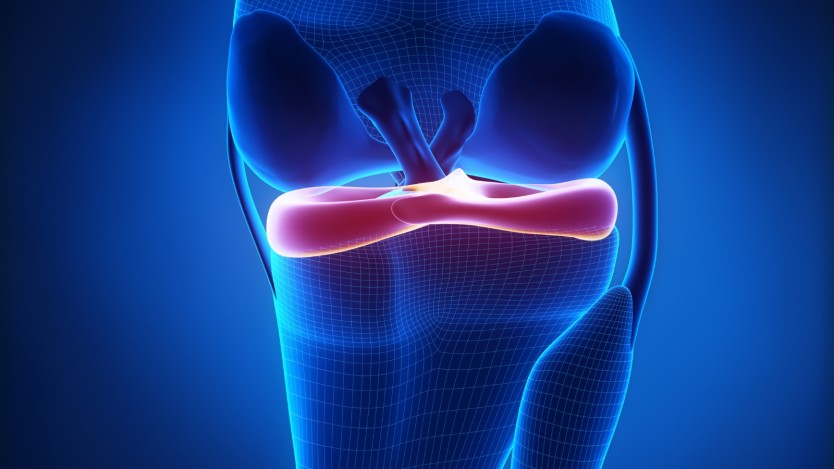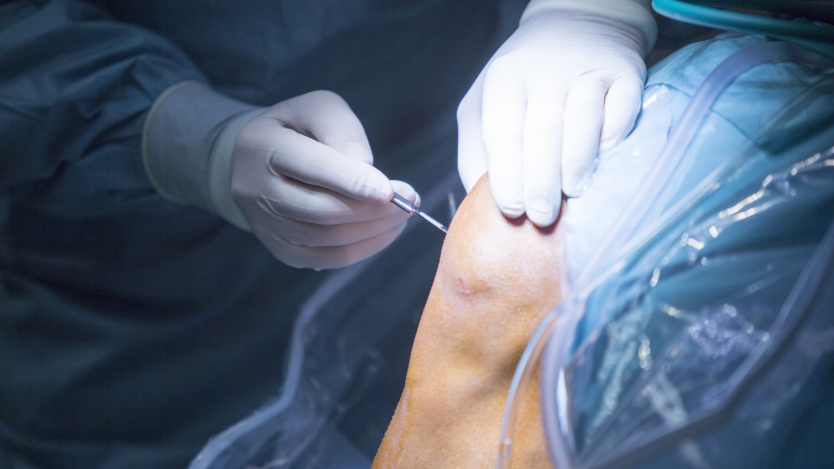Meniscectomy: what it is, types, advantages and complications

- Why is a meniscectomy necessary?
- Types of meniscectomy
- Alternatives to meniscectomy: meniscal suture
- What is a meniscectomy?
- What are the advantages of a meniscectomy?
- Are there any risks or complications of meniscectomy?
- Request a free surgical assessment appointment with Operarme
Why is a meniscectomy necessary?
- Meniscectomy is the surgery in which the torn tissue of a torn meniscus is removed, in order to eliminate pain in the area and unblock the joint to regain mobility.
- Meniscus injuries or tears can occur for a variety of reasons, the most common of which are: falls, high-performance sports or wear and tear due to age.
- Meniscectomy is a surgery performed under regional anaesthesia and by arthroscopy, a minimally invasive technique that ensures a faster and more bearable recovery.
Although you probably already know this, in the case of a meniscus injury, surgical treatment is chosen whenever non-surgical conservative treatments (RICE: rest, ice, compression and elevation) are not effective or cannot be carried out, and repair surgery is recommended.
In the case of meniscectomy, this surgery is performed when a meniscus injury or tear causes discomfort, pain and other symptoms that lead to blockage of the knee and limit the life of the affected patient.
Generally, this surgery is recommended for both young people and older adults, with the most common cause of meniscus injury being trauma during a sporting activity or after other types of overexertion of the joint (climbing stairs, falling, etc.).
Meniscectomy is the surgical removal of some or all of a torn meniscus.
Meniscectomy is performed with the aim of improving the patient's quality of life, as well as restoring normal mobility to the affected knee by unblocking it. Although meniscectomy is a specific technique within the meniscus operation by arthroscopy, the repair of the affected meniscus can be carried out by other means whenever possible, although the most common is the partial meniscectomy technique.
These techniques are meniscal suturing, meniscal transplantation (in the case of patients who are going to undergo reoperation for the same injury) or, as a last option, collagen implantation (a process that is very rarely performed).
Therefore, one of the key points before resorting to any type of surgery is to have a knee specialist who, after a thorough assessment, will indicate the best option.

Types of meniscectomy
As far as meniscectomy is concerned, nowadays only partial meniscectomy is performed, sometimes accompanied by meniscal suturing if possible. Total meniscectomy, as explained below, has fallen into disuse.
Partial meniscectomy
Partial meniscectomy is the most commonly used technique to solve meniscus problems by removing the free part of the meniscus that comes off in cases of meniscal tears.
The decision to remove part or all of a meniscus is made based on the location of the tear, the length of the tear, the pattern of the tear and its stability. In addition, other important factors to be considered by the specialist are the condition of the affected knee, the age of the patient, as well as other factors particular to each individual, such as previous injuries, joint diseases, other pathologies, medication, etc.
This treatment is indicated for patients who have a lot of pain and/or swelling in the area, as these symptoms mean that the torn fragments of the meniscus need to be removed and the edges surgically smoothed to soften the rest of the meniscus. In these cases, surgeons try to preserve as much meniscal tissue as possible to prevent long-term degeneration of the joint and allow the patient to return to normal activities and daily routines.
Arthroscopic partial meniscectomy is performed more frequently than the other techniques, as it is better suited to most meniscal tears.
Total meniscectomy
Total meniscectomy consists of the complete removal of the meniscus. Today this technique is no longer used because it was found that patients who underwent this procedure suffered an accelerated osteoarthritis process, and only partial meniscectomy was performed.

Alternatives to meniscectomy: meniscal suture
Meniscal suturing is the most recommended technique for meniscus surgery, although it is only possible for specific types of tears and may involve additional costs in addition to the cost of the operation. It consists of suturing the damaged part of the meniscus. It is the most common choice for young people and athletes, as it has very good long-term results.
To determine the feasibility of this treatment, the trauma specialist will take into account the size of the tear and its location, as well as the patient's age, state of health and the type or level of activity performed on a daily basis.
He or she will also check that the meniscus can be successfully repaired, i.e. that the injury is repairable without the need to remove the affected portion.
On the other hand, you should know that in some cases small tears located on the outer edge of the meniscus may heal on their own. However, when they are larger and located towards the medial area, they run the risk of not healing properly, given that the blood supply in this area is usually poor, so it is in these cases when specialists consider meniscal suturing to be a good option.
However, a mixture of meniscectomy and meniscal suturing is often chosen, although it depends on the type of meniscal tear.
Are you looking for a solution to the discomfort caused by a meniscus injury? You can request a free surgical assessment consultation in your city by clicking on the image below:

Do you need meniscus surgery?
Request a free and immediate appointment with our specialists
What is a meniscectomy?
Meniscectomy is a surgical procedure usually performed by arthroscopy, a minimally invasive technique that reduces the chances of complications and ensures a faster and more bearable recovery.
Meniscectomy is performed under regional anaesthesia and lasts only 30 - 60 minutes.
In order to understand more accurately what happens during meniscectomy surgery, we explain below the steps that are followed in the operating theatre during the procedure:
Once in the operating theatre, the first step will be to follow the surgeon's instructions to get on the stretcher in the surgical position that he or she will indicate:
- The specialist, together with the anaesthetist, will administer the regional anaesthesia. You will not feel anything from the waist down during the surgery.
- If necessary, the area where the incisions will be made will be shaved, cleaned and disinfected.
- Next, the surgeon will make 2 to 3 incisions, at his or her discretion, of between 2 and 4 cm each.
- Through one of these incisions, the surgeon will introduce a saline solution to improve the visibility of the inside of the knee, eliminating any liquid that may cloud the image perceived through the arthroscope.
- Next, the arthroscope is inserted through one of the incisions. This is a narrow tube with a tiny camera and light at one end, connected via fibre optics to a monitor at the other end, which allows the surgeon to see inside the knee without having to open the joint.
- The other incisions will be used to introduce the surgical tools into the joint to perform the meniscectomy.
- Normally, the technique used will be a mixture of partial meniscectomy and meniscal suturing, as it is rare that only part of the meniscus is torn. Suturing is only performed on the vascularised part of the meniscus, whereas meniscectomy is performed on the non-vascularised area, as it cannot regenerate on its own.
- When the doctor has completed the surgery, the saline solution, arthroscope and other surgical tools are removed, the incisions are sutured and the dressing is applied. You will then be taken to the recovery room where you will recover from the anaesthesia.
The duration of meniscus surgery by arthroscopy varies depending on the severity of the tear, so it is usually performed in approximately 30 to 60 minutes.
After surgery, you will be taken to the resuscitation room, where you will recover from the effects of the anaesthesia and will be under the care of the medical staff to check that everything has gone well until your vital signs have been restored. Once you have been given the all clear, you will be taken to your room where you will stay for at least one day until you are discharged from hospital.
Full recovery after meniscectomy is usually achieved within 2 to 4 weeks.
What are the advantages of a meniscectomy?
After surgery, the main benefit of the meniscectomy operation is, obviously, to solve the tear or injury and thus eliminate the pain, inflammation and blockage of the joint, allowing you to lead a normal life without discomfort and return to your sporting activity without limitations.

On the other hand, the general improvements one gets with meniscus surgery are:
- Eliminate pain: after surgery, the sharp pain in the area when resting on or pressing on the lower part of the knee is reduced to a minimum and disappears progressively during recovery.
- It prevents and reduces muscle atrophy: the muscle mass that you may have lost during the injury stage, by not exerting yourself with the affected leg, you will be able to recover it during recovery and with the help of rehabilitation. After surgery, you will be able to strengthen your knee and recover its normal mobility.
To ensure the success of the meniscectomy, a rehabilitation process with physiotherapy and subsequent professional supervision is necessary.
The advantages related to the surgical technique used, arthroscopic meniscectomy, are as follows:
- Reducing recovery time: by making minimal incisions, the healing of the incisions is faster than in the case of open surgery. Recovery is also faster in the case of meniscectomy compared to meniscal suturing.
- Shorter hospital stay: thanks to the fact that bleeding and affected tissues are minimal, you can go home the same day after surgery or the following day, avoiding spending several days in hospital.
- Reduced complications: in addition to reducing recovery time, the chances of blood clots, haemorrhages or infection are also minimised because the incisions are minimal and the aesthetic appearance is improved.
Are there any risks or complications of meniscectomy?
Meniscectomy does not usually cause complications but, as with any surgical procedure, there is always a chance of a mishap.
The risks of meniscectomy include the following:
- Nerve damage: during the operation there is a minimal risk of affecting the nerves present in the joint as it is a small area into which various surgical tools are inserted. In any case, as we mentioned, these types of complications are very rare and are solved during the surgery.
- Reactions to anaesthesia: as during any surgical procedure, it is possible to suffer a negative response to the drugs used for analgesia, but as in the previous case, specialists can solve it both during and after the intervention.
- Risk of bleeding or infection.
- Accelerated degeneration of the joint: if more meniscal tissue is removed during surgery, this can lead to less load-bearing capacity of the knee and more wear and tear on the joint.
In any case, we insist that these complications and risks, both intra- and postoperative, occur very rarely and are usually solved in the same surgical act or during rehabilitation under the attentive care of the health personnel.
Request a free surgical assessment appointment with Operarme
If you want to solve once and for all the problems and limitations caused by a meniscus tear, recover the normality of your daily life and improve your quality of life. We offer you the best specialists in Traumatology and Orthopaedic Surgery in your city.
Just click on the image below to request a free surgical assessment consultation with our specialist to learn about your case and verify the viability of a meniscectomy for your problem.

Do you need a meniscectomy?
Request a free and immediate appointment with our specialists in Traumatology
You can also book a consultation with the specialist by calling at +34 91 141 33 56 or by sending a contact form.
Medical disclaimer: All the published content in Operarme is intended to disseminate reliable medical information to the general public, and is reviewed by healthcare professionals. In any case should this information be used to perform a diagnosis, indicate a treatment, or replace the medical assessment of a professional in a face to face consultation. Find more information in the links below:
